Building the Rip City Remix
How the Trail Blazers assembled a front office, coaching staff and roster from scratch for the franchise's new G League team.

Starting a professional sports franchise from scratch is a daunting task, and the Trail Blazers were on an accelerated timeline.
Since he took over as general manager in 2021, Joe Cronin had wanted a G League team. The Blazers were one of two teams that didn't have an affiliate in the NBA's minor league, and it was putting them at a disadvantage in player development.
In recent years, the G League has become a more important part of the NBA ecosystem than it's ever been. The introduction of two-way contracts in 2017 has led to more G League players making it to, and sticking in, the NBA. Top high-school prospects (including the Blazers' own prized rookie, Scoot Henderson) have started bypassing college for the G League's Ignite team. Not having their own affiliate made it too much of a hassle for the Blazers to get their young players valuable minutes.
"You're sending them to a different organization," says assistant general manager Mike Schmitz. "How are you doing all the travel? How long will they be there? You're having daily conversations with the coach, who's not a part of your organization. There's a lot of hoops to jump through, and your guys aren't getting development. We had guys on two-ways who didn't play a minute, because we didn't have a G League team."
In his first year on the job, Cronin worked with the NBA league office and G League president Shareef Abdur-Rahim on figuring out a way to make it happen. Getting a G League team was never a priority for the previous front-office regime, and Cronin felt it was too important to wait any longer. With blessing and financial backing from Blazers owner Jody Allen, he and the league set about figuring out timing and logistics, eventually settling on the University of Portland's Chiles Center as a home arena and the Blazers' own practice facility in Tualatin as a headquarters.
These plans were finalized in April, with training camp set to begin in October. The marketing team's choice of name, the Rip City Remix, has been met with universal acclaim. But the basketball operations department had just a few months after that to assemble a front office, coaching staff and roster for a franchise that didn't exist at the beginning of the year.
The story of how it all happened involves a lot of moving parts, some lucky breaks and connections, and work that would normally take over a year crammed into one summer.
Schmitz was the front-office executive that Cronin tasked with helping get the Remix off the ground. Having built his career as a scout, first cofounding the website DraftExpress and then working as a national writer and draft analyst at Yahoo and ESPN before joining the Blazers, Schmitz's encyclopedic knowledge of prospects at all levels and worldwide connections in the agent and scouting communities made him the natural choice to spearhead the effort.
Schmitz came to the Blazers from ESPN in the summer of 2022 as one of Cronin's first high-profile hires after having the interim tag lifted and being named the permanent general manager. Despite the near-complete overhaul of the organization that took place after Cronin's predecessor, Neil Olshey, was fired for violating the team's code of conduct, a few lower-level front-office staffers stuck around.

One of those people was Danny Connors, who has been with the Blazers since 2016. Originally hired as a basketball operations assistant, he was promoted first to high-school scouting coordinator, then scouting coordinator, then personnel analyst. That job involves not just scouting and watching film, but also gathering background intel on players.
Schmitz had known Connors in passing through the years from the scouting circuit. But as he familiarized himself with his new coworkers in his first year in Portland, Connors' work ethic and diversity of scouting experience made him stand out as someone who was ready for a bigger opportunity. And so the Remix had its first-ever general manager.
"You really get to know people and see their work," Schmitz says. "And Danny was just always on top of it. Organized, a grinder, lives in the gym, is probably here more hours than anyone for the last seven years. And he was really interested in the job. I saw that he knows close to every single player on the planet, and his ability to connect with coaches and the entire organization."
From the beginning of the process of building a staff, the Blazers zeroed in on Jim Moran as their top choice to be their G League team's first-ever head coach. Both Cronin and Connors thought highly of him from the seven years he spent with the organization previously as a member of Terry Stotts' staff. He joined the Blazers in 2014 as an assistant video coordinator before being promoted to the coaching staff, earning respect from Stotts and Blazers players for his developmental acumen. When Stotts was fired and replaced by Chauncey Billups in 2021, Moran landed with the Pistons as an assistant coach, where he spent the last two seasons.

Moran's future in Detroit was up in the air when he received a call in June from Cronin. His boss, Dwane Casey, announced at the end of the season that he would be stepping down as head coach and transitioning into a front-office role, and the Pistons hired Monty Williams on a record-setting contract to replace him. Since most new head coaches want to pick their own staffs, Moran didn't know whether or not Williams would keep him on.
The job with the Blazers' then-unnamed G League team appealed to the 44-year-old Moran because of the opportunity to return to a city and franchise he already knew, and the chance to gain head coaching experience. Cronin and his staff liked that Moran had a background in player development—the primary purpose of the G League—as well as an easygoing-yet-serious personality they felt could translate to a position of authority.
"He's incredible," Schmitz says. "He has the ability to relate to the guys but also be on top of his stuff. He can make a joke and also hold you accountable. His people skills are incredible and he knows the game inside and out. He's aligned with a lot of the things that Joe and Chauncey are trying to build.
"It was a no-brainer. It was more, 'Will he take [the job]?' than it being him or the field."
Another key hire around that time was former University of Portland star Pooh Jeter, who played one year in the NBA over a decade ago with the Kings and had a long career overseas. At the time of his hire, many people around the NBA made the connection that the 39-year-old Jeter had spent the past two seasons playing for the G League Ignite and mentoring 19-year-old phenom Scoot Henderson, whom the Blazers later selected with the No. 3 overall pick in the draft.
But the Blazers didn't just hire Jeter because they were thinking about drafting Henderson. He had a familiarity with the organization, both from playing college basketball in Portland and from spending training camp with the Blazers in 2009. Schmitz has been a mainstay on international basketball circuits and gotten to know Jeter as he played all over the world. Jeter even had a connection with Billups' brother, Rodney, who is on the Blazers' coaching staff—they were once in training camp together with the Colorado 14ers, a now-defunct franchise in what was then known as the NBDL, now the G League.
"I don't think there's a person in the world who has a bad thing to say about Pooh Jeter," Schmitz says. "He lights up a room with his spirit and his energy."
As Jeter's playing career was winding down after his second season with the Ignite, he was still figuring out what he wanted to do next. The Blazers were determined to hire him and figure out the job description later—let him get a taste of coaching, scouting and front-office work and see what he liked best. His official title with the Remix is assistant general manager, and he splits his time between working with Connors in that role and working as a player-development coach on Billups' staff with the Blazers.

Connors and Moran went to work at Summer League in Las Vegas interviewing assistant coaching candidates. It was a bit of a stealth operation, with the pair ducking into coffee shops, hotel ballrooms and closed restaurants with open tables at the Wynn—anywhere they could grab a few minutes with someone. Moran was also working with the Blazers' Summer League team, which was coached by assistant Jonah Herscu, so he was pulling double duty, sitting in coaches' meetings while working around that schedule to fill out his own staff. He calls it the "most hectic" of the roughly 10 Summer Leagues he's attended in his career.
Eventually, they hired George Galanopolous as Moran's lead assistant. Galanopolous had spent the previous four seasons as the head coach of the Dallas Mavericks' G League team, the Texas Legends, and had a long history with Schmitz. They were roommates a decade ago when they both worked for the Bakersfield Jam of the then-D League, Schmitz as an assistant video coordinator and Galanopolous as a player development coach. In recent years, Galanopolous brought Schmitz onto his staff when he accepted a job as the head coach of Uganda's national team.
Still, Schmitz says it was Connors and Moran who floated Galanopolous' name to him and Cronin after interviewing him in Las Vegas, rather than the other way around. In addition to his pre-existing relationship with Schmitz, Galanopolous had a working relationship with the Blazers dating back to 2019. Before they had their own G League team, the Blazers were forced to assign players to other organizations, and sent several of their players to the Legends over the years, including Moses Brown and Jaylen Hoard. Connors and Moran saw it as a win that someone with G League head coaching experience was even interested in taking a job working under a first-timer.
"George has been great for me because he's been a head coach in the G League," Moran says. "He'll tell me things to look out for that I wouldn't have even thought of, because he's been through it."

To fill out the rest of the coaching staff, they hired former Windy City Bulls and Fort Wayne Mad Ants assistant Chris Kent and University of Dayton video coordinator Leron Black. Indiana Fever guard Victoria Vivians is working a coaching internship with the Remix during the WNBA's offseason, and Alex Sarama, a native of England with coaching and front-office experience in Europe, joined the Remix as director of player development.
"G League staffs are so small that you really can't miss," Connors says. "Who's the best trainer we can get? Who are the coaches that are best to put with Jim to help him? We've put together a staff that I think has a lot of upside, where we're going to be better halfway through the season than we are right now."
When it came to the roster, Cronin and Schmitz tried to give Connors the leeway to make moves on his own. There are some things the parent club has to be more involved with—players on two-way contracts who will be bouncing back and forth between the Blazers and Remix, as well as players on Exhibit 10 deals who will attend NBA training camp. But when it came to selecting returning-player rights in the G League expansion draft, evaluating players in the open public tryouts in Tualatin and Seattle, making deals with other teams and running the G League draft last month, getting the experience of making those decisions themselves was a part of the job the Blazers' front office wanted to empower Connors and Jeter to do.
G League transactions are different from NBA ones. Most players are on standard contracts making around $40,000 per year, so the salary-matching aspect of NBA trades isn't a factor. The open tryouts are a total free-for-all with a $300 registration fee, featuring some players with college or overseas experience and others who have never played organized basketball before. The G League draft is a mix of NBA veterans looking for another shot, players with G League experience and undrafted NBA prospects looking for a way in.
"It's different from the NBA draft, because you'd know the players and have been scouting them and tracking them and had eight months to watch film and gather intel," Connors says. "With the G League, you basically find out who's in the player pool two days ahead of time."
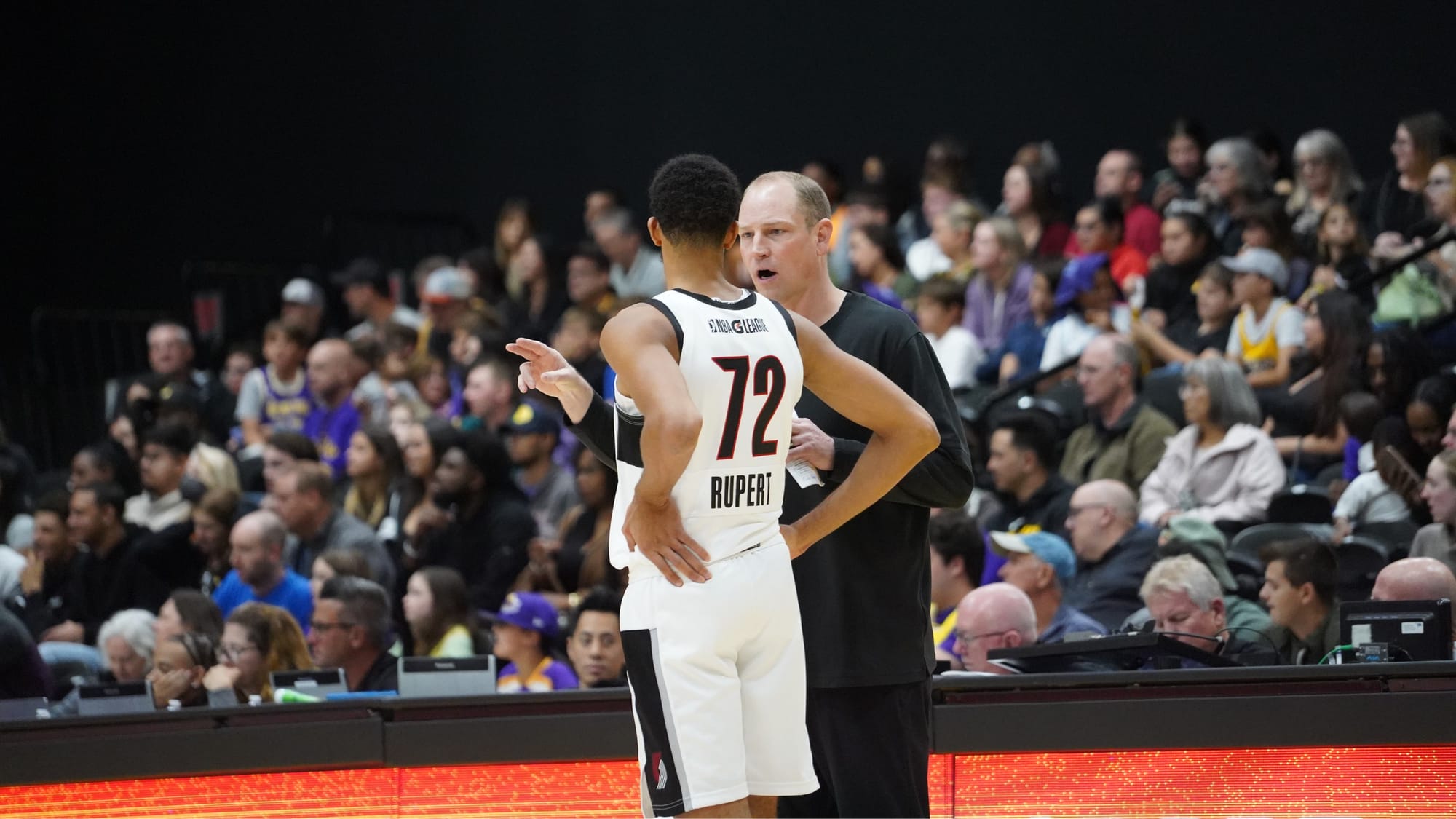
The Remix's first-ever draft pick, former LSU guard Brandon Rachal, was cut in training camp. Connors and Moran liked him, but roster spots are extremely limited when you account for Exhibit 10 players. That's just how the G League works—an NBA team waiving their first-round pick before his first season would be a disaster, but the minor leagues are a completely different set of norms.
Making trades has been another new experience for Connors. In his old job as a personnel analyst, he'd talk with front-office staffers from other teams, but that was in an information-gathering capacity. Having to negotiate with other GMs was a new skill for him to learn.
So far, he seems to have taken to it. After guard Michael DeVoe, whose returning rights he selected from the expansion pool, had a strong Summer League with the Blazers, Connors parlayed him into a first-round pick from the Salt Lake City Stars. And he put together an immensely complicated five-team trade to acquire the rights to Justin Minaya from the Mexico City Capitanes, to make sure the Remix could keep him if the Blazers cut him in training camp. (Minaya ultimately stayed with the Blazers on a two-way contract.)
Much like the Damian Lillard trade talks that ate up most of Cronin's summer, Connors says that five-team deal for Minaya's rights took three months to negotiate and pull off. And the advice he says Cronin gave him in his first summer as a GM was the same mantra Cronin lived by during those Lillard talks: be patient and keep the focus on doing what's best for the organization.
This is the kind of experience the Blazers hope will one day help Connors become an NBA general manager. Staff development is just as important as player development to what the G League is about, and several NBA head coaches, including Philadelphia's Nick Nurse, Atlanta’s Quin Snyder and Oklahoma City's Mark Daigneault, were head coaches in the G League before they got those gigs. Any first-time head coach will tell you how steep the learning curve is, and the G League is a perfect environment to develop those skills.
"When you're an assistant coach, you're used to having information funneled to you by someone else," Moran says. "You know your scout [assignment], you know which players you're working with, you get a text telling you what time the team meeting is and what time the plane leaves. It's been my biggest adjustment as a head coach, being the source for all of that. Being a head coach isn't just about deciding playing time and running a system and making a practice schedule. There are so many logistical things I didn't even know I had to think about."
The on-court part of being a head coach in the G League is a delicate balance. This is Moran's chance to show what kind of coach he wants to be, but he can't stray too far stylistically from what Billups' staff is doing. There are some nights where the Blazers will have three or four players assigned to the Remix, with the understanding that they'll play extended minutes in order to develop. Other nights, Moran will only have his own players and play a completely different rotation. He has to keep the Remix players bought in even when their playing time will fluctuate wildly. It's a different kind of challenge than any other coaching job, and he's still feeling his way into it.
"The best way to run a G League team is to mirror what the NBA team is doing," Moran says. "Guys are going back and forth, and you don't want them to have to learn a whole new playbook. The terminology is the same. But there are different little wrinkles you can throw in there."

A week into the Remix's existence, the Blazers are already reaping the benefits of having a G League team playing in the same city.
Two-way center Duop Reath's 37-point, 10-rebound performance in last Friday's season opened was followed by a call-up, and he's now in the Blazers' rotation. Ish Wainright, who missed the beginning of the season with a calf injury, used a rehab assignment with the Remix to play his way back into game shape before rejoining the big club. Minaya and rookies Kris Murray and Rayan Rupert, who aren't in Billups' regular rotation, have gone back and forth on an almost daily basis, staying around the Blazers while getting meaningful in-game experience with the Remix.
"It widens the scope of guys you can bring into the organization, knowing that they're going to be able to develop by getting real minutes," Schmitz says. "That's the way to develop, by playing through mistakes and learning and getting those reps and seeing different situations. Now, the fact that we have that right in our backyard, it's huge."
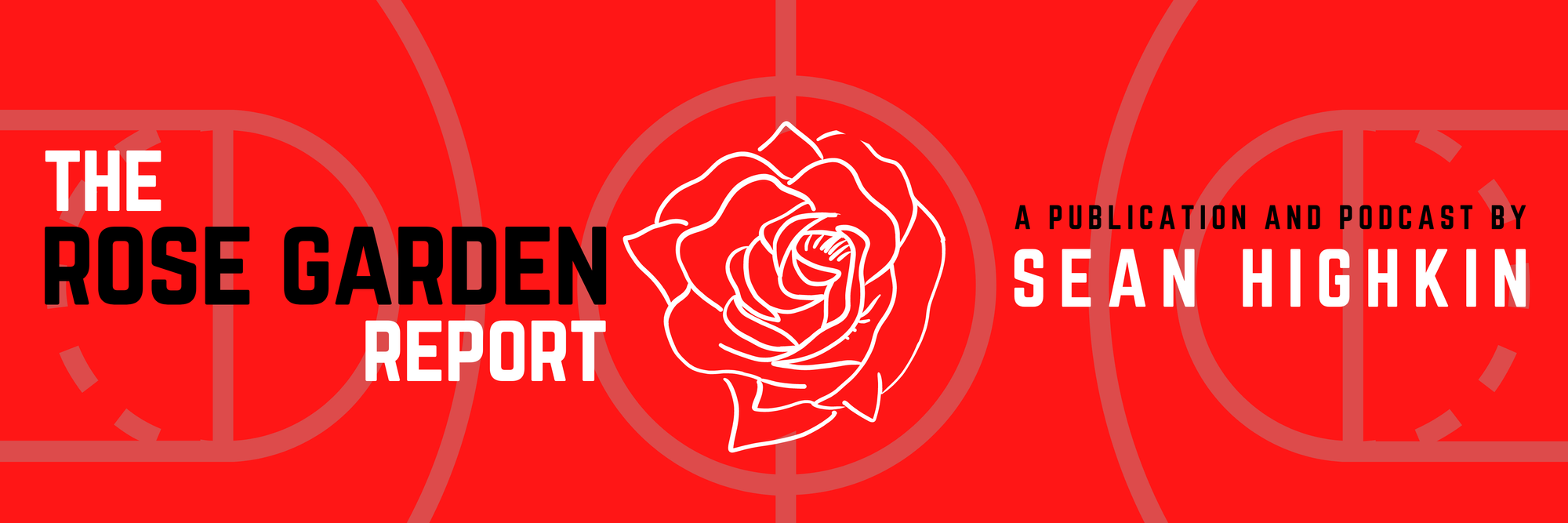
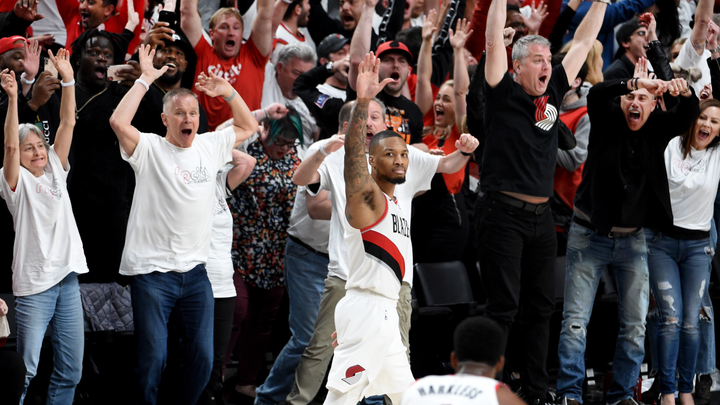
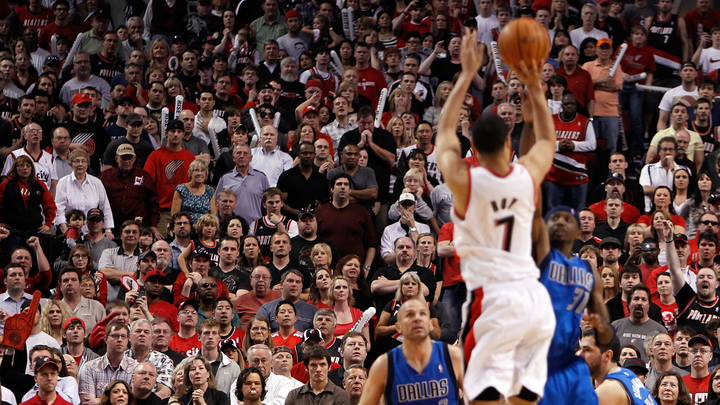
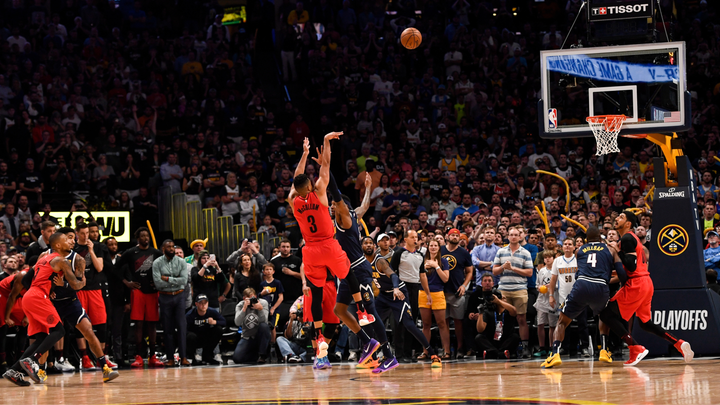
Comments ()